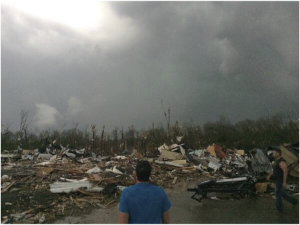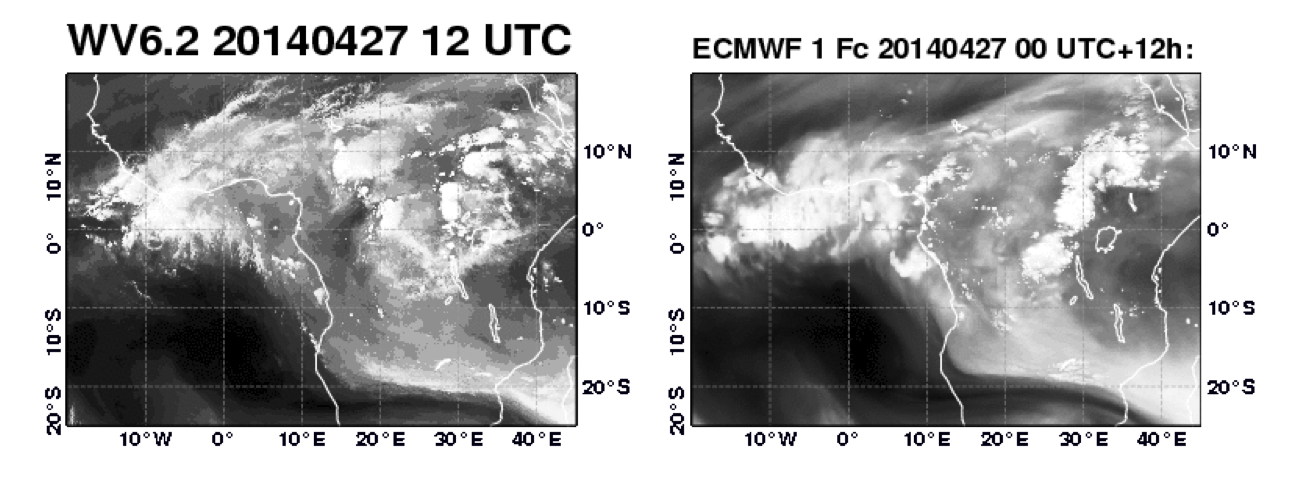...
| Section | ||||||||||||||||||||||||||||||||||
|---|---|---|---|---|---|---|---|---|---|---|---|---|---|---|---|---|---|---|---|---|---|---|---|---|---|---|---|---|---|---|---|---|---|---|
|
Initial conditions
| Info |
|---|
Note:
|
Initial conditions
To be done.
The initial conditions data for the case studies described here are available for OpenIFS 40r1. Please contact OpenIFS Support if you require initial experiment data for more recent model version. |
Case study initial conditions for this case study are provided on the OpenIFS ftp site.
The initial conditions are available at a range of different resolutions. The experiment ids are created at ECMWF and used for identifying the model forecasts on the ECMWF archive system (for those with access).
All of the initial data provided are derived from ECMWF operational analyses (not ERA-Interim). These operational analyses use a horizontal resolution of T1279 and 137 vertical levels. Lower resolutions are spectrally fitted and interpolated to produce balanced initial conditions.
| Info |
|---|
As OpenIFS is a spectral model, the 'T' number refers to the triangular truncation in spectral space. Equivalent grid resolutions are: The number of vertical levels is given after the letter 'L' e.g. L62 means 62 vertical levels. Please note that higher resolutions progressively require more processors and computer memory to run. |
| Panel | |||||||||||||||||||||||||||||||||||||||||||||||||||||||||||||||||||||||||
|---|---|---|---|---|---|---|---|---|---|---|---|---|---|---|---|---|---|---|---|---|---|---|---|---|---|---|---|---|---|---|---|---|---|---|---|---|---|---|---|---|---|---|---|---|---|---|---|---|---|---|---|---|---|---|---|---|---|---|---|---|---|---|---|---|---|---|---|---|---|---|---|---|---|
| |||||||||||||||||||||||||||||||||||||||||||||||||||||||||||||||||||||||||
|
Download instructions
| Code Block | ||
|---|---|---|
| ||
% mkdir -p runs/convection/t255
% cd runs
% ftp ftp.ecmwf.int
ftp> cd case_studies/convection_USA_Africa
ftp> binary
ftp> get t255l62_g4a4_2014042700.tgz
ftp> quit
% tar zxf t255l62_g4a4_2014042700.tgz
% cd 2014042700
% ls
ICMCLg4a4INIT ICMGGg4a4INIT ICMGGg4a4INIUA ICMSHg4a4INIT ecmwf
% ls ecmwf
NODE.001_01.model.1 ifs.start.model.1 namelistfc |
Note that the initial conditions unpack into a directory named by the date/time of the forecast start.
The 'ecmwf' directory contains the files produced at ECMWF when this experiment was run:
- namelistfc : copy this file to 'fort.4' to run the experiment (modify as required)
- NODE.001_01.model.1 : this is the model output file as run at ECMWF. If your run fails, it may be useful to compare with this file.
Perform control forecast and analysis
...
The first step is to run the control forecast. Both cases can be studied with a single 30 hour forecast.
Use the initial files dated 27th April 2014 (filenames include 2014042700) starting at 00Z. Some additional initial files are provided for 22nd April and can be used for the N.America tornado case to investigate the impact of lead time on the forecast.
See below for tasks and key questions to address for the control forecast before moving on to the sensitivity experiments.
| Info |
|---|
We suggest starting with horizontal resolution of T255 for these exercises. Higher resolutions can be used for comparison. |
Case study: N.America deep convection
...
On 27 April 2014 7pm local time (00UTC 28 April), tornadoes hit towns north and west of Little Rock, Arkansas.
| Section | ||||
|---|---|---|---|---|
|
| Note | ||||
|---|---|---|---|---|
| ||||
Column |
|
Case study: African deep convection
Deep convection develops over central Africa as shown on the water vapour satellite image below, with the accompanying ECMWF forecast shown as a false satellite image. Note that local time for the location in central Africa shown on the map is UTC+2hrs.
| Section | ||||
|---|---|---|---|---|
|
| Note | ||||
|---|---|---|---|---|
| ||||
|
...
Sensitivity experiments
The IFS is highly tuned to give the best forecast over a range of initial conditions. However, it is instructive to try some sensitivity experiments to understand the role of various physical and dynamical processes.
...
- How important is the correct diurnal cycle of precipitation and radiation for 2m temperature and dewpoint forecast?
Further reading
Journal publications
- Bechtold, P.
- et al, 2014, Representing Equilibrium and Nonequilibrium Convection in Large-Scale Models. J. Atmos. Sci., 71, 734–753. http://journals.ametsoc.org/doi/abs/10.1175/JAS-D-13-0163.1
- Bechtold, P. et al, 2008, Advances in simulating atmospheric variability with the ECMWF model: From synoptic to decadal timescales, QRMS, 134, DOI: 10.1002/qj.289
- Petch, J. C. et al , 2002: The impact of horizontal resolution on the simulations of convective development over land. Quart. J. Roy. Meteor. Soc., 28, 2031–2044. DOI: 10.1256/003590002320603511
Other online material
- See section on convection in description of Atmospheric Physics: http://www.ecmwf.int/en/research/modelling-and-prediction/atmospheric-physics
- More information about the N.American tornadoes can be found on the ECMWF Severe Event Catalogue - 201404 - Convection - Arkansas U.S
- ECMWF training course lecture notes on : Introduction to Moist Processes (PDF), Convection lecture 1 (PDF), Convection lecture 2 (PDF), Convection lecture 3 (PDF)
- IFS documentation, Part IV, Physical Processes - Chapter 6: convection (PDF).
- ECMWF Newsletter, summer 2014, number 140. Article on OpenIFS user workshop 2014 (Stockholm), page 2 (PDF)
...
Comments
The forecasting system at ECMWF makes use of "ensembles" of forecasts to account for errors in the initial state. In reality, the forecast depends on the initial state in a much more complex way than just the model resolution or starting date. At ECMWF many initial states are created for the same starting time by use of "singular vectors" and "ensemble data assimilation" techniques which change the vertical structure of the initial perturbations.
As further reading and an extension of this case study, research how these methods work.
Acknowledgements
We are especially grateful to : Peter Bechtold for suggesting these case studies, assisting in their preparation and for his support during the OpenIFS workshop. We also give a special thanks to: Glenn Carver, Filip Vana , and Sandor Kertesz in preparing the material for the OpenIFS user workshop in Stockholm 2014, from which most of the material on this page is derived. We also thank the forecast department for their material on the ECMWF Severe Event Catalogue that was used in preparing these cases.
We also thank the participants of the OpenIFS user workshop in Stockholm for their participation and enthusiasm.
| HTML |
|---|
<script type="text/javascript" src="https://softwarejira.ecmwf.int/issues/s/en_UKet2vtj/787/12/1.2.5/_/download/batch/com.atlassian.jira.collector.plugin.jira-issue-collector-plugin:issuecollector/com.atlassian.jira.collector.plugin.jira-issue-collector-plugin:issuecollector.js?collectorId=5fd84ec6"></script> |
| Excerpt Include | ||||||
|---|---|---|---|---|---|---|
|






